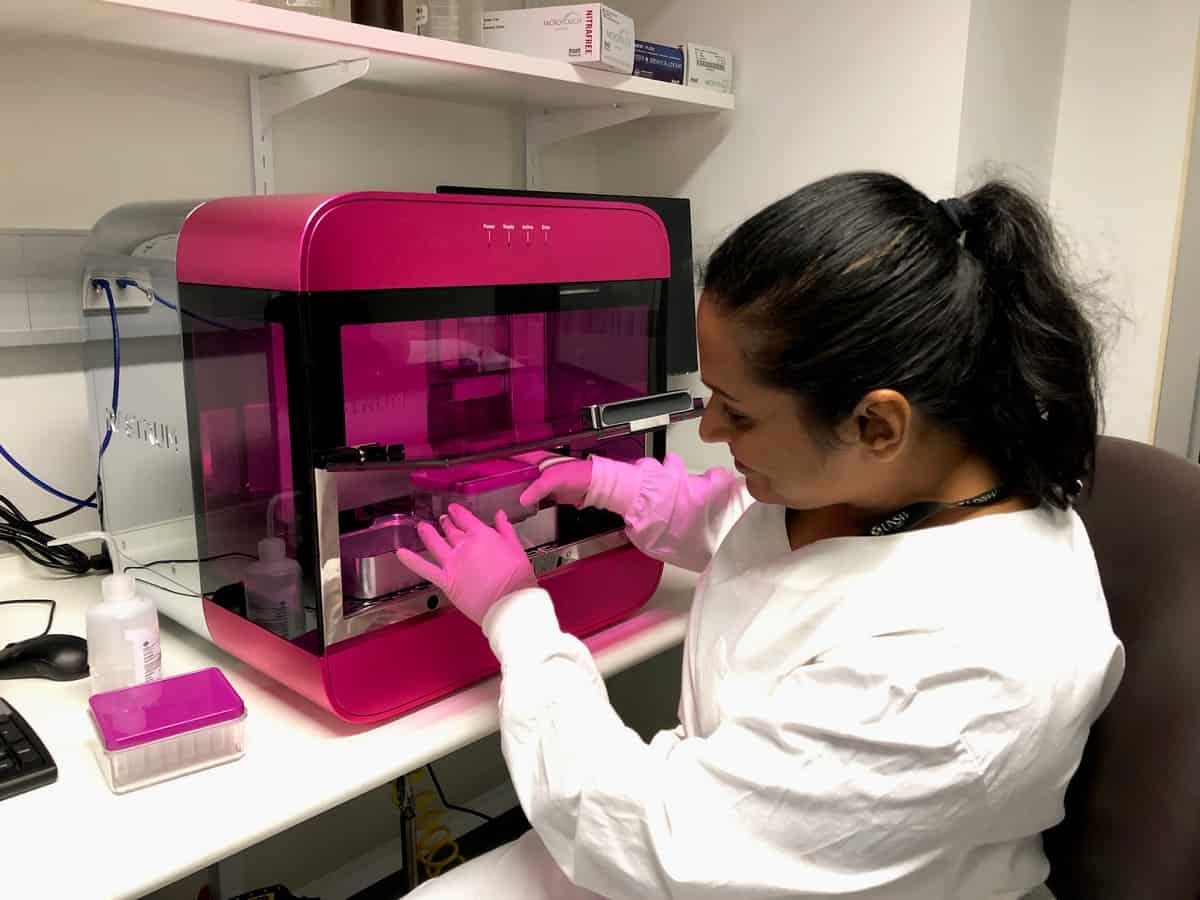On Friday, the Australian Museum Eureka Prize 2021 announced that the RASTRUM printer developed by Inventia Life Science had won first place in its Eureka Prize for Innovative Use of Technology. Inventia’s 3D bio-printer RASTRUM uses inkjet printer technology to print lifelike human cells.
The revolutionary technology will advance researchers’ ability to understand how new drugs and treatments will react with real living cells. The technology is currently being used to print cancer cells so researchers can test and optimise chemotherapy and other cancer treatments.
Inventia
Inventia Life Science is an Australian biotech startup company located in Sydney. Founded in 2013, its aim is “The development, manufacture and sale of equipment and reagents for advanced medical research assays by means of 3D bioprinting,” with an emphasis on low-cost, standardised technology to transform medical research.
A company representative spoke about the funding the company has received to bring its 3D bioprinting tech to life.
“Inventia was initially funded by its founder, Dr Julio Ribeiro, from 2011 to 2017, when it received its Seed round of $1.6m in early 2017 led by Blackbird Ventures, and an oversubscribed Series A round of $10m in late 2018 that combined many of Australia’s leading VC funds – Blackbird, Skip Capital, Main Sequence and AirTree.”
In the journey, Inventia Life Science received both federal & NSW government grants to bring the RASTRUM platform to market.
“Through judicious use of this capital and government funding, Inventia was able to launch the RASTRUM platform and secure leading global customers – an incredible achievement considering the capital usually required to launch a platform of this nature.”
What is Bio-Printing
Digital bioprinting is an extension of traditional 3D printing technology that allows for the production of living and non-living biological tissue such as living cells or molecules. The printers work similarly to 3D printers, but instead of producing layers of materials such as plastic, they produce layers of biomaterial.
Bioprinting technology is quickly gaining traction and use amongst both universities and pharmaceutical companies. The technology rehearses the benefit of using 3D cells rather than the traditionally used 2D cells.
Inventia co-founder and CEO Dr Julio Ribeiro said, “Culturing cells in 2D has been the bedrock of biomedical research and widely used for over seven decades due to its simplicity. However, there is a problem with this approach — cells in the body don’t grow in 2D, but rather in a very complex environment in 3-dimensions.”
He continued: “3D cell cultures are therefore a much better model for the in vivo environment and better represent human tissue and the biological processes that impact cellular behaviour and drug responses. But as with any new technology, there are challenges, specifically the long time-consuming nature and high cost of preparing 3D cell cultures through a process that is very manual and not scalable and reproducible.
“The 3D bioprinting field has expanded into many biomedical research applications, such as regenerative medicine and drug discovery. 3D bioprinting methods have enabled a significant increase in the efficiency of production of 3D cell cultures and also enabled their formation with high precision that would not be possible manually.”
RASTRUM
RASTRUM is Inventia’s 3D bioprinting platform. It is the world’s first high-output 3D bioprinting platform. The bright pink 3D bioprinter’s compact dimensions make it perfect for benchtop laboratory use.
Dr Ribeiro said, “The 3D cell cultures that RASTRUM produces are compatible with a diverse range of workflows and analysis techniques used in cell biology which means that the researcher can spend more time on their research and less time on optimisation processes.”
The RASTRUM platform represents a revolution in the field of biomedical research. The ability to create 3D cell cultures that mimic human tissue has huge research ramifications.
“Inventia Life Science have developed RASTRUM, which is the world’s first high-throughput 3D cell culture platform that has been designed specifically for cell biology and is revolutionising biomedical research and drug development.
“RASTRUM has been designed with simplicity in mind to ensure that anyone, even a person without prior experience in bioprinting can use the platform and generate meaningful results,” said Dr Ribeiro.
Other tech
Inventia is currently building upon its 3D bioprinting by developing technology capable of printing living skin. The technology is hoped to transform the treatment options for damaged skin. By printing a new layer of skin using the patient’s own skin cells, Inventia’s tech will speed up the recovery process, reduce the likelihood of infection, and reduce scarring.
Dr Ribeiro said, “Inventia is currently developing a skin printing robot named Ligō, which aims to transform the way clinicians approach wound treatment and skin regeneration. Inventia has partnered with world-renowned skin surgeon Professor Fiona Wood (the University of Western Australia and Royal Perth Hospital) and leading bioprinting researcher Professor Gordon Wallace (University of Wollongong), to address the current challenges in skin and wound therapy.
“The Ligō robot prints stem cells and stem cell-like materials in a controlled manner, and the printing process is based on the same drop-on-demand core technology that is found in the RASTRUM platform. In vivo studies are currently ongoing with the goal of entering first in human clinical trials within the next two years.”
For more information, please see inventiaskin.com
Read more: Brisbane bio-tech firm lands $302 million U.S. contract for at-home COVID tests
Read more: Cancer research startup Inventia wins Australia’s top design prize
Keep up to date with our stories on LinkedIn, Twitter, Facebook and Instagram.

